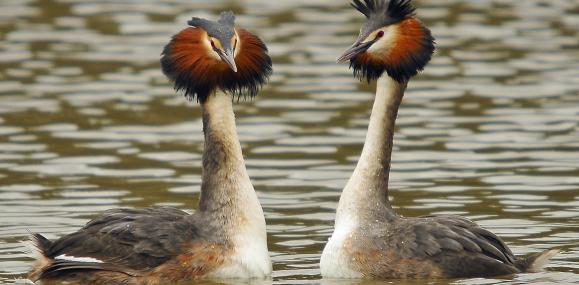Grebes are diving waterbirds, feeding on small fish and aquatic invertebrates. A little bit larger than a Coot, Great Crested Grebes nest on floating platforms made up of waterweed.
The Great Crested Grebe was nearly hunted to extinction in the UK for its elegant feathers. They have made a comeback and are now regularly seen on waterbodies, including man-made lakes, flooded gravel pits and reservoirs. The Wildlife Trusts work with planners, water companies and landowners to help make our man-made waterways and waterbodies as good for wildlife as they are for people. By working together, we can create a 'Living Landscape': a network of habitats stretching across town and country, allowing wildlife to move about freely and people to enjoy the benefits of nature. Support this greener vision for the future by joining your local Wildlife Trust.
